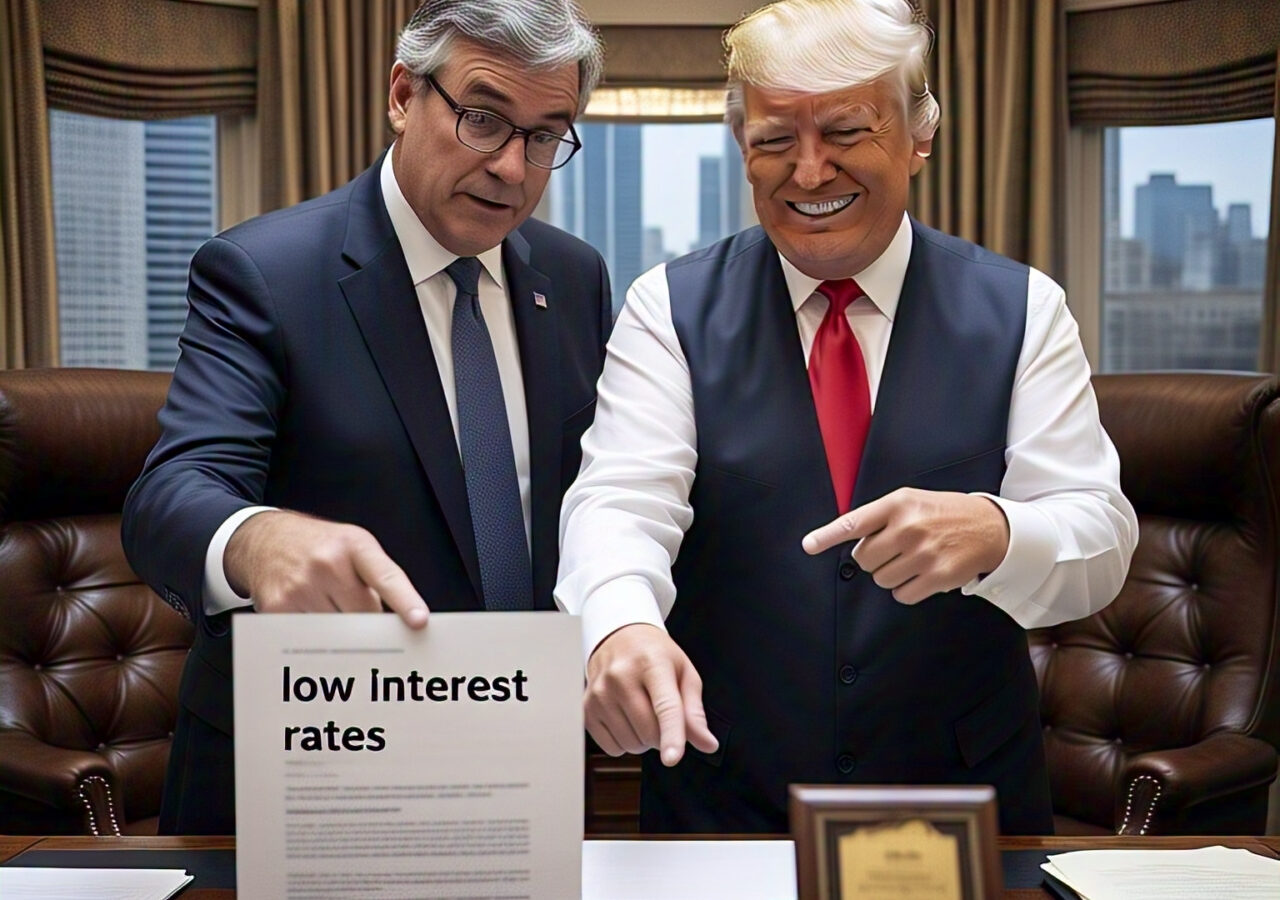The drama about to unfold will take time to play out fully. But here is my opinion on what is coming next in this financial theater – a carefully orchestrated campaign that goes far beyond tariffs and trade wars. I am not a genius, but I have a good memory and have seen a similar play before. And I must say. It is genius.
The Real Agenda: Lower Rates, Not Trade Wars
Let us be clear: this is not some grand tariff war, no matter how breathless the headlines. What we are watching is not about trade — it is about interest rates. Specifically, it is the Trump administration waging war on them.
With approximately $7 trillion in federal debt maturing this year, the White House faces a monumental refinancing challenge amid the highest interest rates in two decades. Every basis point reduction in refinancing costs saves taxpayers $700 million annually. Simple math suggests that engineering a 1% rate drop would save around $70 billion per year — real money even by Washington standards.
The Stock Market President’s Playbook
We have seen this movie before. During President Trump’s first term, the Federal Reserve cut interest rates three times in 2019, dropping the federal funds rate from 2.5% to a range of 1.5-1.75%. The results were nothing short of spectacular for risk assets. The S&P 500 surged approximately 29% in 2019, while the Nasdaq skyrocketed 35%—one of the strongest performances of the decade.
When the pandemic struck in 2020, the Fed slashed rates to near-zero and unleashed unprecedented monetary support. The market’s response? After the initial panic selling, the S&P 500 rallied over 68% from its March 2020 lows to December 2020, completing one of the fastest recoveries from a bear market in history. NASDAQ performed even better, soaring over 87% during the same period.
Powell Successor Strategy
Trump’s second-term agenda appears focused on recreating these market conditions. With Federal Reserve Chair Jerome Powell’s term expiring in May 2026, the stage is set for Trump to nominate a significantly more dovish replacement – someone aligned with his vision of aggressive monetary easing and robust stock market gains.
This transition will be the cornerstone of Trump’s economic strategy. A dovish Fed chair would be more inclined to cut rates aggressively, particularly if economic data provides even the slightest justification. Unlike Powell, who maintained a degree of independence and often resisted Trump’s calls for deeper cuts during his first term, a hand-picked successor would be more amenable to the administration’s market-first approach.
The Treasury’s Strategic Maneuvers
Treasury Secretary Bessent has rolled out a strategic plan that targets borrowing costs not through rate policy, but by quietly manipulating supply. The centerpiece? Fewer 10-year Treasury auctions. By restricting the flow of benchmark debt, Bessent is squeezing supply to spark demand — and in turn, drive yields down. It is simple market mechanics, executed with political finesse.
The Tariff Distraction
The calculation from Pennsylvania Avenue is remarkably straightforward: create enough economic uncertainty to drive capital into Treasury bonds (the classic “flight to safety”), suppress yields, refinance the maturing debt at lower rates, and then—miraculously!—resolve trade tensions once the Treasury’s funding needs are secured.
Corporate America’s Dance with Cheap Money
Corporate borrowing tells the story behind these rallies. U.S. corporate debt issuance hit a record $2.28 trillion in 2020, up 60% from the previous year. Notably, institutional investors did not simply stockpile this cheap capital – they deployed it aggressively into equities. Corporate stock buybacks reached $728 billion in 2019 as companies leveraged low borrowing costs to repurchase their shares, creating artificial demand that propelled higher prices.
The Ultimate Goal: A Three-Pronged Strategy
Trump’s administration is executing a coordinated strategy with three clear objectives:
- Lower government spending through targeted budget cuts and operational efficiencies.
- Drive interest rates down through Fed pressure, tariff threats, and Treasury supply management.
- Reduce deficits by combining spending discipline with lower interest costs on national debt.
For investors fretting about their portfolios amid trade war headlines, I offer the same wisdom I give to my son: “Watch the 10-year Treasury. That’s the real story.” When the yield hits the sweet spot, tariffs will magically become negotiable.
Timeline and Investment Implications
At the end of this rainbow is indeed a pot of gold for investors, but it is likely 1-3 years in the making as these policies take hold. The markets will not respond overnight to these structural shifts but rather through a gradual repricing as the strategy unfolds.
The initial market turbulence from tariff threats and policy uncertainty will eventually give way to a sustained bull market fueled by lower rates, corporate buybacks, and renewed risk appetites from institutional investors, just as we saw during Trump’s first term, only potentially more dramatic given the lessons learned and strategies refined.
And when it all plays out exactly as outlined here, remember one thing: I TOLD YOU SO AGAIN!
Summary: TLDR
The stock market’s a wild beast in the short term; do not say I did not warn you. Back in February, I told you the smart money was sprinting into bonds. While I told readers to take money off the table and raise cash. Believe me, the opportunity of a lifetime is on the horizon—but hold your horses, it is not here. Now’s the time to keep your liquidity primed so you can pounce on stocks when the dust settles. Trying to pick the absolute bottom right now is like catching a falling butcher knife—dangerous and unpredictable, and the wound can run deep. And for those paying attention… I TOLD YOU SO… AGAIN!

